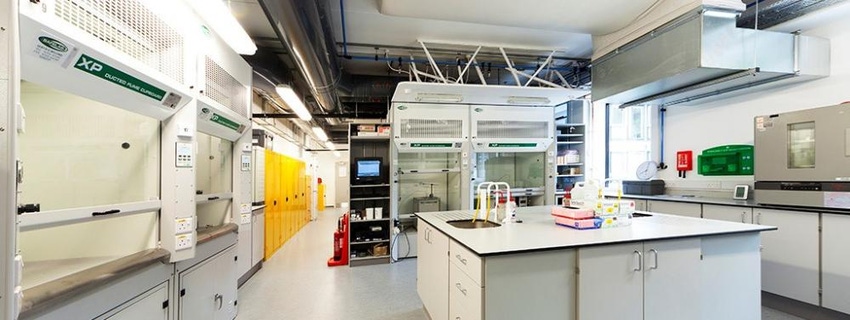The Importance of Process Safety Data
February 17, 2016

Excellence in process safety performance requires an integrated approach to addressing programs, culture, and competency. One important aspect of competency is having a wealth of the right information available, and accessible, to support and underpin the overarching safety management system. This includes both asset information (P&IDs, vessel register, instrumentation, piping and physical equipment inventory, safety systems - including safety instrumented functions, etc. - and process information: batch manufacturing records, quality/IPC procedures, raw material information, material safety data, process safety data, etc.). While the requirements for asset information and most process information is reasonably prescriptive – and hence can be reliably audited and assured - the specification of required process safety data is far from prescriptive. This often leads to ineffective or inefficient systems and can completely undermine otherwise excellent process safety management systems.
What is Process Safety Data?
There are various properties of materials which can present process safety hazards. These can be conveniently grouped as properties relating to:
• Dispersed phase deflagration/explosion hazards arising from flammable (explosible/combustible) dust, gas, and vapor clouds
• Detonation or deflagration of highly energetic material (usually condensed phase)
• Fire and burning properties
• Decomposition of thermally unstable materials (substances or mixtures)
• Runaway exothermic and/or gas generating chemical reactions (intended or unintended)
A range of other properties are also relevant to process safety and can lead to multi-casualty scenarios in the event of a loss of containment. Electrostatic properties and phenomena, for example, are often at the root of explosions in providing the ignition source and are highly relevant in the context of process safety data. Other, very relevant, data includes toxicity and ecotoxicity properties and other physical properties that can impact on the consequence of release (water solubility, partition coefficient, density, vapor density, vapor pressure, boiling point, etc.). These properties, while pivotally important, are not considered “core process safety” properties in the context of this article.
Learn More about Process Safety at the International Powder & Bulk Solids Conference & Exhibition, May 3-5, 2016
Regional regulators have placed stringent requirements on operating companies to conduct risk assessments and implement preventative or mitigating measures to avoid a catastrophic outcome from such events. Regulations and programs such as the ATEX Directives in Europe and the OSHA Combustible Dust National Emphasis Program in the U.S. have been mandated by the authorities to ensure the risks are adequately addressed, understood, and mitigated. Formal Process Safety Management (PSM) programs also recognize process safety information (PSI) as a cornerstone of excellent performance. Despite these regulations and programs, events continue to occur globally often causing serious injury or fatality (SIF), as well as major property damage on- and off-site.
Avoiding such events might require a single safety system or a combination of measures that collectively protect the plant, personnel, and environment from the consequences of all foreseeable undesirable events. These individual or collective measures – which can be organizational or technical - are defined as the basis of safety for the plant or operation. This basis of safety provides an important anchor point for the evaluation of operational stability by various plant stakeholders.
For the plant manager, it provides a concept that he can question and for which appropriate KPIs can be defined (and checked) with an understanding of who has accountability of the various components of the basis of safety. For safety managers, the basis of safety acts as a reference point around which enabling systems can be developed (training needs, tools, and procedures).
For engineering and maintenance managers, it provides a basis to proactively introduce and sustain appropriate layers of protection to strengthen the overall robustness of the basis of safety, along with assuring appropriate preventative maintenance programs are in place for the components of the basis of safety. Having a clear, unambiguous, visible, and well-documented basis of safety therefore provides a focus for robust sustenance of plant (and personnel) protection systems.
Conclusion
Any hazard and risk assessment, irrespective of the nature of the hazard or risk, requires a methodical strategy involving:
• Characterization of the process and materials: Determining the fundamental hazards of the materials and processes involved
• Risk assessment: Evaluating the risks associated with handling the materials and processes in the proposed equipment under normal and foreseeable abnormal operating conditions
• Consequence analysis: Determining the consequences of all foreseeable abnormal operating conditions
• Basis of safety system specification, design and implementation: Specification of preventive or protective measures that mitigate hazardous scenarios or reduce the consequences hazardous scenarios to tolerable levels
Deficiency in any of these areas will potentially result in an ineffective – or in the worst case unsafe – basis of safe operation. This generic multi-step procedure invariably iterates between laboratory scientists and plant engineers (touching a range of other disciplines in the process) giving further scope for misalignment.
All of this is further compounded by the plethora of process safety data available – a few common properties illustrated in Figure 1. Only by combining knowledge of the appropriate sources and uses of test data with knowledge of plant operations and operating conditions can good risk management judgments be assured.
Dr. Stephen Rowe manages the activities in the UK of Dekra Insight Process Safety. He has a career background in the assessment of chemical reaction hazards and the laboratory assessment of a full range of process safety hazards including dust, gas, and vapor flammability and explosives characterization. He is an experienced trainer and regular contributor to national and international process safety conferences and symposia.
For related articles, news, and equipment reviews, visit our Instrumentation & Control Equipment Zone
Click here for a List of Instrumentation & Control Equipment Manufacturers
You May Also Like


